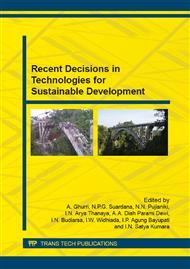p.371
p.377
p.384
p.390
p.396
p.403
p.413
p.419
p.425
Mobile Robot Motion Planning to Avoid Obstacle Using Modified Ant Colony Optimization
Abstract:
The ability of mobile robot to move about the environment from initial position to the goal position, without colliding the obstacles is needed. This paper presents about motion planning of mobile robot (MR) in obstacles-filled workspace using the modified Ant Colony Optimization (M-ACO) algorithm combined with the point to point (PTP) motion in achieving the static goal. Initially, MR try to plan the path to reach a goal, but since there are obstacles on the path will be passed through so nodes must be placed around the obstacles. Then MR do PTP motion through this nodes chosen by M-ACO, in order to form optimal path from the choice nodes until the last node that is free from obstacles. The proposed approach shows that MR can not only avoid collision with obstacle but also make a global planning path. The simulation result have shown that the proposed algorithm is suitable for MR motion planning in the complex environments with less running time.
Info:
Periodical:
Pages:
396-402
Citation:
Online since:
July 2015
Authors:
Price:
Сopyright:
© 2015 Trans Tech Publications Ltd. All Rights Reserved
Share:
Citation:


